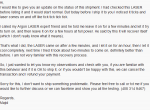Anthony P
Well-known member
- Joined
- Oct 7, 2018
- Messages
- 536
- Points
- 63
Recently I ordered a 2214-40MLA argon head on e-bay. It has not shipped yet, but I received a message from the seller about starting issues. I know argons have to be "exercised" periodically. A good warm up may rejuvenate it. What do you guys think? Here is the message I received:

Thak you in advance for your input.

Thak you in advance for your input.




